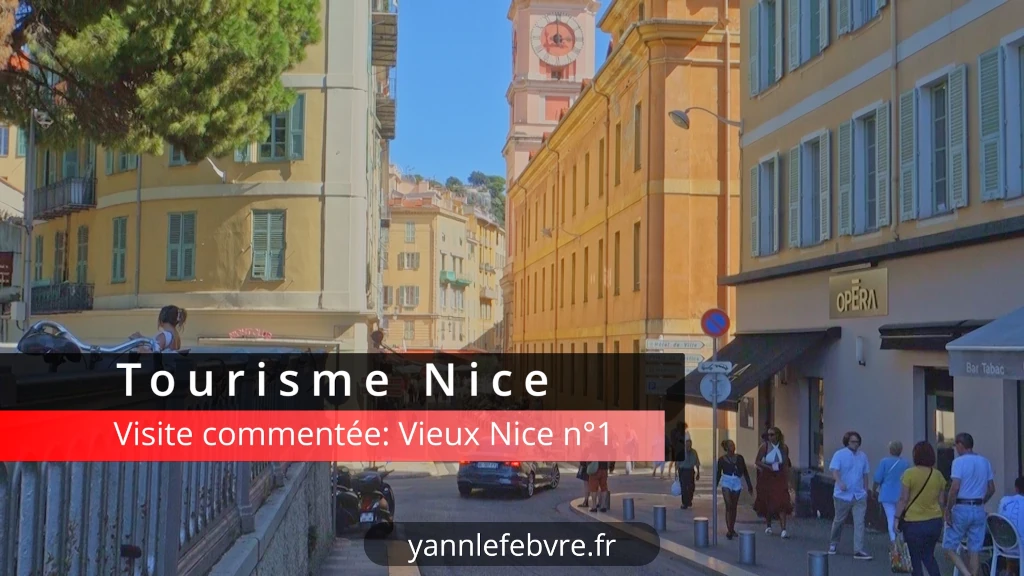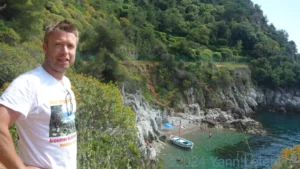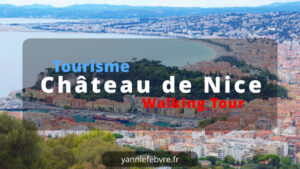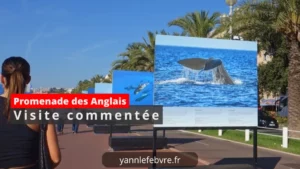Table of content
Old Nice: Courthouse Square, Cours Saleya & Place Rossetti visited! This 3-minute tourist stroll will take you to discover the main squares of the old town. Other walks will allow you to discover the major squares of the city of Nice such as Place Massena, Place Garibaldi or even Place Saint-Francois which deserves other independent articles.
I start with Old Nice, because it is the major tourist site of the city. During my walk, I also pass through streets with a particular charm that I show you. I finish this tour, at the foot of the hill of the Château de Nice, which I will show you in another video.
Courthouse Square
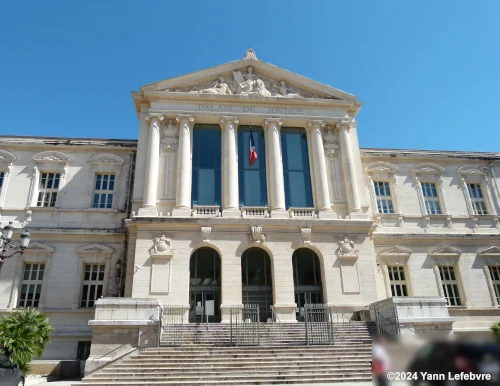
Courthouse Square on Google Maps
Useful information on Courthouse Square
The main monument on the square is the neoclassical-style courthouse, built at the end of the 19th century. This square is surrounded by Palaces: the Palace of Justice, the Rusca Palace and the Clock Tower and the Palace of York, former Spitalieri of Cessole hotel.
A charming artistic structure sits on the north side. The activity on the square is interesting for literature enthusiasts and collectors, because markets take place every Saturday:
- Old and used books, the 1st and 3rd Saturday of the month,
- Postcards, old records and waste paper on the 4th Saturday of the month
- Artistic and artisanal products on the 2nd and 5th Saturdays of the month.
Cours Saleya
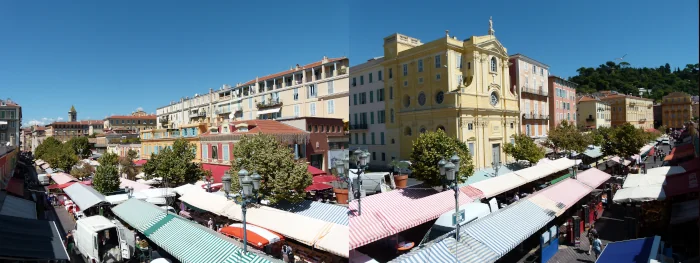
In the video, I use the staircase opposite the Chapelle de la Miséricorde which goes up to the terraces, as the main viewpoint over 180°. The market is over and I head west, towards the Palace of Cais des Pierlas. We also see images of one of the many pubs that liven up the square. These are the 3 devils. It’s a pub that I liked to frequent a few years ago.
Cours Saleya on Google Maps
Useful information about the Cours Saleya
It is the main pedestrian route in Old Nice; the « Cours Saleya », is parallel to the Quai des Etats-Unis, the Promenande des Anglais and the sea.
From the middle of the 18th century, the site was established as a place of representation for wealthy Nice families and foreign winter visitors. Facing the sea, raised terraces are built on the site of the fortifications and accessible to the public. For example, in 1839, in a house, along the courtyard, on the north side, Benoit Visconti transformed a building with a terrace into an exceptional place where the European intelligentsia met in the second half of the 19th century. On July 22, 1861, the municipality of Malausséna approved the creation on the Cours of the city’s first flower, fruit and vegetable market.
But from the end of the 19th century, the course lost its festive character. In 1892, the carnival corso abandoned the Cours. The terraces were closed to the public in the 1960s.
It was not until 1980 that a rebirth took place, after major renovation work, of the entire site as a whole. The course then resumes its role as a pedestrian promenade appreciated by the people of Nice. Today, despite the closure of the terraces and the absence of carnival, it remains a trendy area, renowned for its emblematic flower market and its sunny terraces bordering bars and restaurants.
Flea market, flower markets and food markets
On Monday, all day, the space becomes a flea market.
From Tuesday to Sunday, a market is set up on the course, in the morning, until 1:30 p.m. Many stands offer food products, partly local, olive oils, fruits and vegetables, etc. But there are also flower sellers and stands in shimmering colors.
Night craft market
From May 17 to September 15, 2024, the night craft market is held from 6 p.m. to 12:30 a.m., Tuesdays, Wednesdays, Thursdays, Fridays, Saturdays and Sundays.
Palace of the kings of Sardinia which became Prefecture of the Alpes-Maritimes
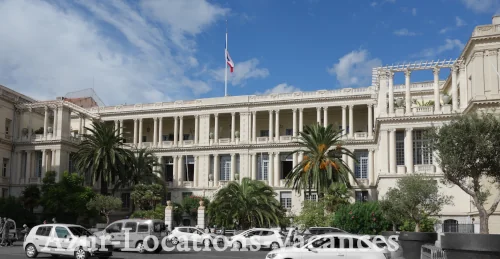
Palace of the Dukes of Savoy, then royal residence of the Kings of Sardinia, it is currently the prefectural palace of Nice. It has been classified as a historic monument since September 3, 1996. The building was rebuilt between 1610 and 1613 by a Duke of Savoy. Moreover, all the dukes of Savoy and kings of Sardinia resided there during their stay in Nice, occupying a floor reserved for nobles. In 1860, after the annexation of Nice, the royal residence became the seat of the Alpes-Maritimes prefecture.
The last administrative services left the Prefecture in 1983 to settle in the buildings of the Var plain. The Prefecture is today the residence of the Prefect of the Department and the President of the General Council.
Some important events took place in this palace.
In 1864, Napoleon III welcomed Tzar Alexander II there.
And in 1960, General de Gaulle resided there and gave a gala dinner.
Finally, in 2001, the Foreign Ministers of the European Union signed the Treaty of Nice there.
The Palace can only be visited on the occasion of « Heritage Days », each year a weekend in September. Find out more by calling the Heritage Information Center now.
Heritage Center – The Senate
14, rue Jules Gilly – Vieux-Nice
Monday from 1 p.m. to 5 p.m
Tuesday to Friday from 9 a.m. to 1 p.m. and from 2 p.m. to 5 p.m
Information: 04 92 00 41 90
Chapel of Mercy or Saint-Gaëtan chapel.
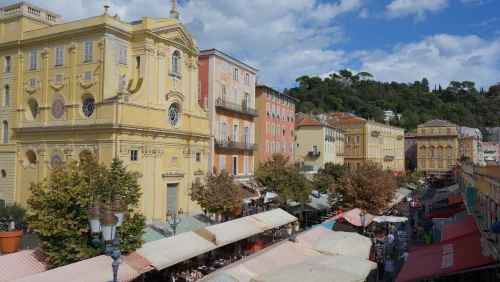
It is a Catholic place of worship, built between 1747 and 1770, located on the Cours Saleya and considered a masterpiece of Nice Baroque. The chapel has been classified as a historic monument since May 30, 1921.
It is managed and guarded by the Archconfraternity of Black Penitents. There are several brotherhoods of Penitents in Nice: the Red Penitents a few dozen meters away, at the chapel of the Most Holy Trinity and the Holy Shroud; the White Penitents at the chapel of the Holy Cross and finally the Blue Penitents, Place Garibaldi.
Caïs des Pierlas Palace
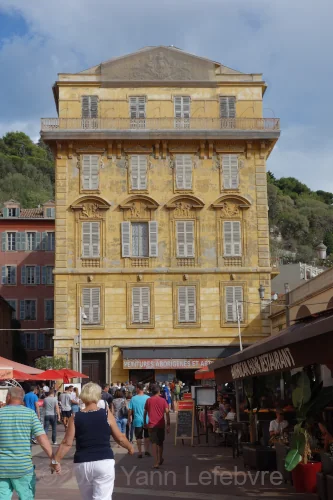
This building would have been built in the 17th century then bought a century later by the Caïs de Pierlas family, a large family from Nice. The baroque-style palace, which had 2 floors, was raised by one floor after the French Revolution, and served the various local counts on several occasions throughout its history. The Palace was raised again, including its 4th floor. It is also embellished with the addition of decorations and reliefs on the facades. Henri Matisse lived in the Palais Caïs de Pierlas, first on the third floor, but also on the fourth, from 1921 to 1938.
Rossetti Place
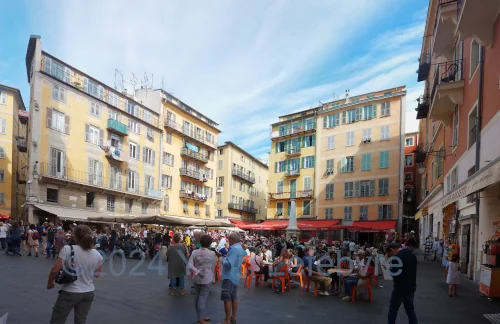
Google Maps map
Useful information on Rossetti Place
The Rossetti family bequeathed the land in front of the cathedral to the city. This donation allowed, in 1825, the demolition of the building built opposite Sainte-Réparate Cathedral. From then on, a real square allowed the widening and beautification of the square. It has become a central point in the tourist activity of Old Nice and the most beautiful square in the old town thanks to its Sainte-Réparate cathedral (the only baroque cathedral in France), its fountain, its buildings in the colors of the sun and its summer shops such as the famous Fenocchio glacier open since 1866.
Sainte-Réparate Cathedral on Rossetti Place
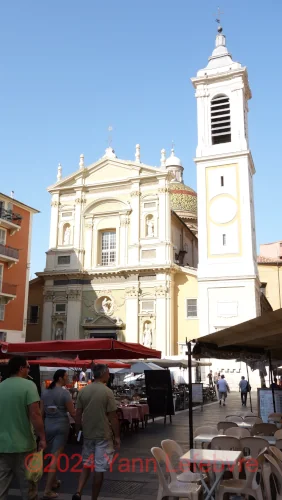
Sainte-Réparate Cathedral was built between 1650 and 1699. It is the seat of the diocese of Nice and classified as a historic monument on August 9, 1906. As I mention in my article on the castle hill, the Sainte-Réparate cathedral replaced over time the Sainte-Marie cathedral placed under the name of Saint Marie de l’Assomption, located in the upper fortified city, on castle hill. The cathedral is remodeled and renovated.
It is rebuilt on the model of the Church of Saint Suzanne in Rome, with glazed colored tiles in Genoese fashion and a baroque style building (exterior and interior). Although I am not a fan of churches, I must admit that the interior is very beautiful and leaves no one indifferent. I invite you to go inside to discover the place because it is the only baroque cathedral in France.
Fenocchio ice cream maker on Rossetti Place
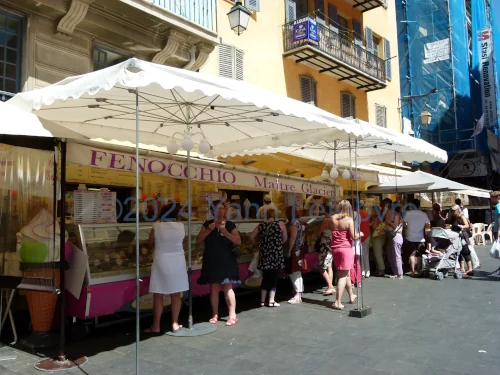
The Fenocchio ice cream maker has existed since 1966 on its site on Place Rossetti in old Nice. But it is at the second point of sale opened since 1998, at 6 rue de la Poissonnerie, much less attacked by tourists, that I buy my ice cream and then continue my wanderings each time I go to the old town.
Old Nice: house of Adam & Eve
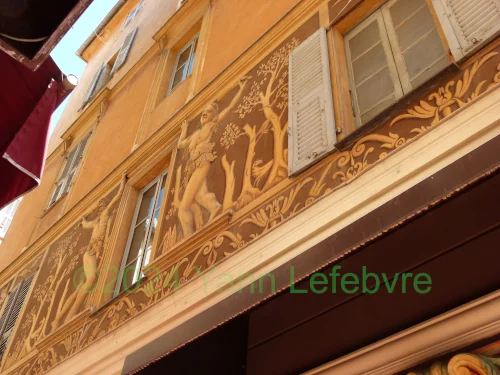
Google Maps of the House of Adam & Eve
Useful information on Rossetti Place
You notice on the first floor, the fresco of the first argument between Adam and Eve. This fresco is restored, but dates from the medieval period (1584).
The scene represents the mythical couple from ancient history, almost naked, threatening each other with clubs, in the heart of the Garden of Eden.
The high fresco is tinged with brown and orange, so you can really miss it without seeing it. Remember to look up in the streets of old Nice if you want to discover other surprises like these.
Old Nice: Nice Castle
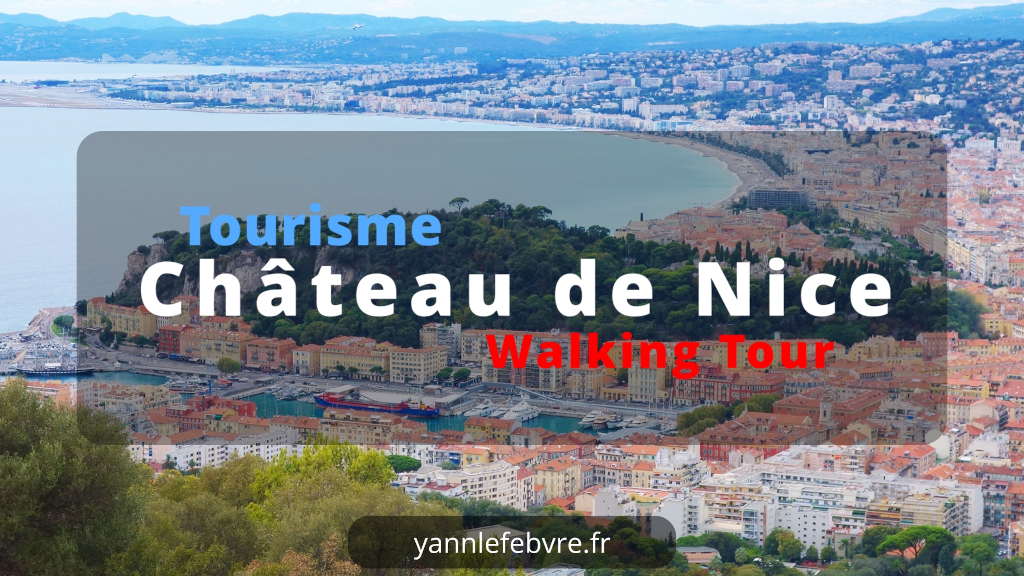
At the end of the video, I find myself on rue Rossetti in front of the Jules Eynaudi staircase. I invite you to discover my guided tour of the castle, commented and filmed or to read my article on the Nice castle to continue your discovery.


